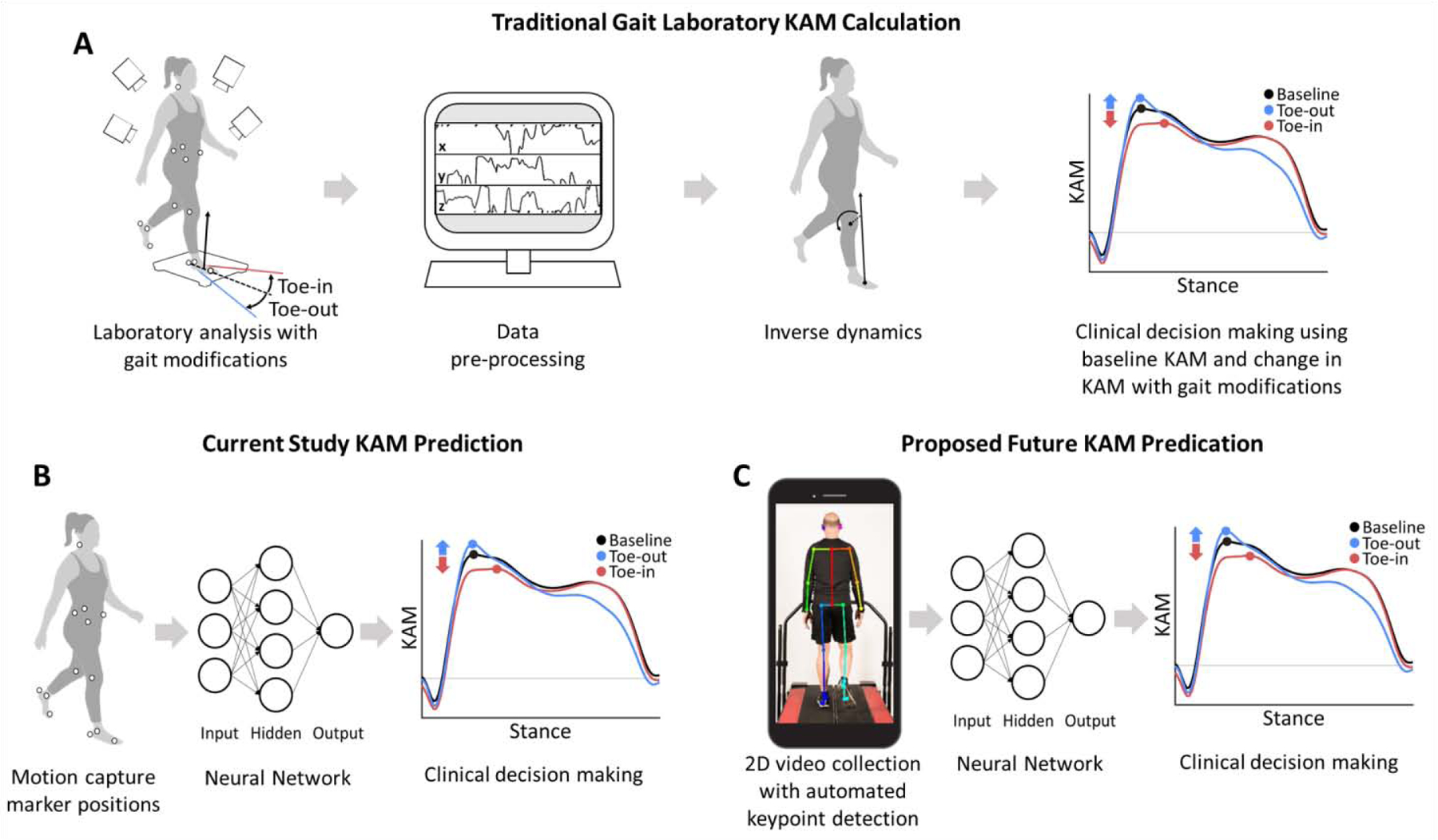Figure 1.

A) The gold standard, laboratory-based workflow for measuring the knee adduction moment (KAM). After motion capture data is collected and semi-manually pre-processed, it is combined with force plate data to compute the KAM using inverse dynamics. B) The workflow for the current study. We use the coordinates of 13 anatomical landmarks from motion capture (to simulate video keypoints) as inputs into a neural network trained to predict the peak KAM. C) Our proposed future workflow for the automated measurement of the KAM. After collecting 2D video of gait, keypoints (e.g., joint positions) could be detected automatically using OpenPose25. A neural network would predict the peak KAM using these keypoints as input.
